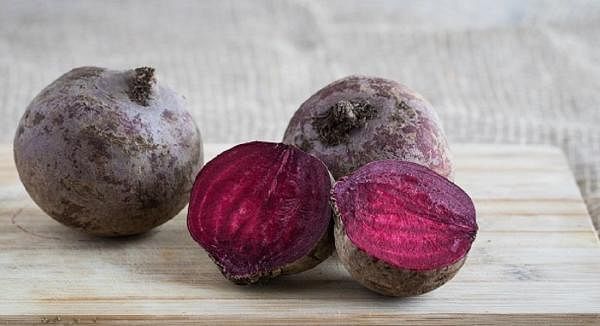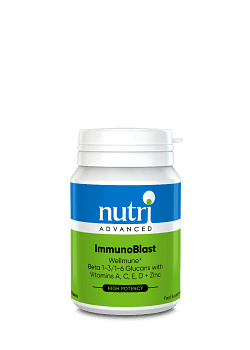The Neurological Impact of COVID-19 & 5 Simple Steps to Take
Why you can trust Nutri Advanced Every article on our site is researched thoroughly by our team of highly qualified nutritionists. Find out more about our editorial process.
In the last 12 months, research into SARS-CoV-2 has thankfully been prolific, as scientists grapple to understand the bigger picture; not only on how to deal with acute infection but on risk factors and longer-term health impacts too. Research continues to gather pace and whilst the only real constant is that it is a constantly changing picture, a lot has been learnt in the last 12 months. In this article we take a look at the observed neurological impact of COVID-19, why protecting the blood brain barrier is always a good idea and five simple steps to support this.
Neurological impact of COVID-19
COVID-19 is caused by the SARS-CoV-2 virus, and may typically present with fever, dry cough, fatigue and respiratory dysfunction. Over the last 12 months however, it has become increasingly apparent that potential symptoms are not isolated to the respiratory system; atypical neurological symptoms have been observed too, not just in the acute phase, but for longer periods following infection too. Common symptoms of acute infection include loss of sense of taste and smell, and among many diverse symptoms clustered under the term ‘Long covid’, possible neurological symptoms include headaches, cognitive impairment, brain fog and altered mood. In fact, much research is now focused on attempting to uncover how a respiratory virus affects the central nervous system (CNS).
Several theories have been proposed including alterations in blood brain barrier, direct viral entry and infection of the CNS and / or immune activation contributing to neurological dysfunction after SARS-CoV-2 infection.1,2 Clearly, this is a constantly changing picture and there is much still to understand. One simple takeaway however is that it is important to consider a 360° view when taking proactive steps to support your general health and wellbeing and this includes looking after not just your immune and gut health but your blood brain barrier too. Everything is interconnected.
What is the blood brain barrier?
The blood brain barrier (BBB) separates the central nervous system (brain and spinal cord) from the peripheral tissues. It controls material, nutrients and cell transfer from the blood to the brain and vice versa. In addition, it supports the clearance of cellular metabolites and toxins from the brain and restricts the entry of peripheral inflammatory mediators into the brain. The complex structure of the BBB consists of endothelial cells, pericytes, vascular smooth muscle cells, astrocytes, microglia and neurons. And similar to the gut barrier, tight junctions are the main structures responsible for the barrier properties of the BBB. Not surprisingly, the BBB is a crucial foundation of health overall and whilst there may be factors out of our control that can impact it, there are steps you can take to help protect it, and no matter what age you are, or what’s happening in the world, this is always a good idea. Here’s 5 simple steps to help you do that.
5 Simple steps to support the blood brain barrier:
✔ Balance inflammation – Low grade systemic inflammation can substantially affect the BBB. Taking steps to keep inflammation in check is therefore key. Increasing levels of ‘anti-inflammatory’ nutrients such as omega 3 fats EPA (Eicosapentaenoic acid) & DHA (Docosahexaenoic acid) in the diet through nuts, seeds and oily fish is a great starting point. Key ‘anti-inflammatory’ botanical considerations include curcumin, rutin, quercetin, rosemary and ginger. Vitamin D has an important role to play in balancing inflammatory processes too and it is important to ensure that levels are maintained within an optimal range.
✔ Regular exercise – Research has shown that regular exercise may help to reduce systemic inflammation, reinforce antioxidant capacity, reduce antioxidant stress and support and protect the integrity of the BBB.
✔ Reduce toxin exposure - We are all surrounded every day by toxins, from food, water and our environment (indoors & outdoors); some of which may be damaging to the blood brain barrier. And whilst you can’t avoid toxins completely, there is a lot you can do to reduce your total exposure. Find out more here on simple ways to reduce your overall toxic load.
✔ Balance blood sugar – A diet high in refined, processed foods, sugary drinks and snacks is closely related to chronic low-grade inflammation which is bad news for the blood brain barrier. Supporting blood sugar balance is therefore a key factor in supporting the blood brain barrier. Find out more here on how to adapt your diet and lifestyle to support blood sugar balance. In addition, key nutrients and botanicals may help to support blood sugar balance and insulin sensitivity. These include chromium, alpha lipoic acid and the powerful spice cinnamon.
✔ Immune support – Infections can be a factor involved in alterations to the blood brain barrier so it is crucial to ensure the immune system is supported to defend against potential pathogens. Key immune support nutrients include vitamin C, vitamin D, zinc and vitamin A. Beta glucans are safe, natural substances found in bacteria and fungi that have been found to have an incredible, natural ability to modulate immune function. Find out more here on the diet, lifestyle and nutrient strategies you can use to support immune health.
✔ More information - And finally, if you’re interested in learning more about the blood brain barrier, click here!
References:
1. Jarrahi, A, Ahluwalia, M et al. Journal of Neuroinflammation 17, Article number 286 (2020): Published 30 September 2020.
2. Buzhdygan TP, DeOre BJ, et al. The SARS-CoV-2 spike protein alters barrier function in 2D static and 3D microfluidic in vitro models of the human blood-brain barrier. bioRxiv. 2020.
This website and its content is copyright of Nutri Advanced ©. All rights reserved. See our terms & conditions for more detail.
Nutri Advanced has a thorough research process and for any references included, each source is scrutinised beforehand. We aim to use the highest value source where possible, referencing peer-reviewed journals and official guidelines in the first instance before alternatives. You can learn more about how we ensure our content is accurate at time of publication on our editorial policy.
Most Popular Articles
-
7 Surprising Ways To Support Your Magnesium
If you are displaying signs of a magnesium deficiency, here are 7 ways to boost your magnesium levels that are easy to incorporate into your daily life. -
5 Best Vitamin C Supplements Picked By Our Experts
Learn more about the different types of vitamin C, the different benefits you get from different types, and what you get for spending more on a good supplement. -
Top 5 Vitamins For Energy And Tiredness Picked By Our Experts
The 5 best and most important vitamins for energy & tiredness including B vitamin food sources & best supplement forms for energy. -
Benefits of Myo-Inositol for Polycystic Ovary Syndrome (PCOS)
In this research review article, we take a closer look at a lesser-known natural compound called myo-inositol that has been found to have significant potential to improve many of the prevalent features of PCOS. -
Top 10 Reasons to Give Your Kids Omega-3
Read the top 10 reasons that kids should have plenty of Omega-3- an essential fatty acid- including for depression, brain function, sleep & reading/maths skills.

















